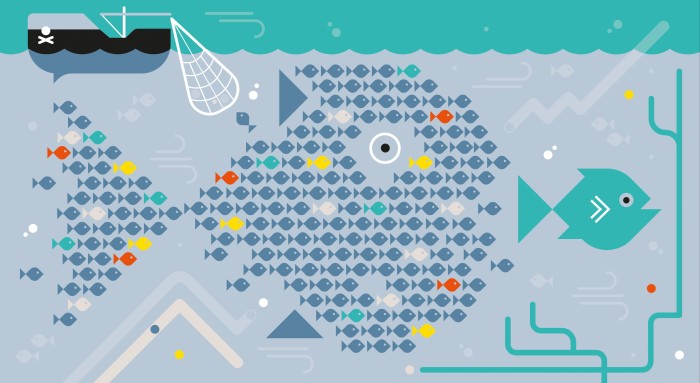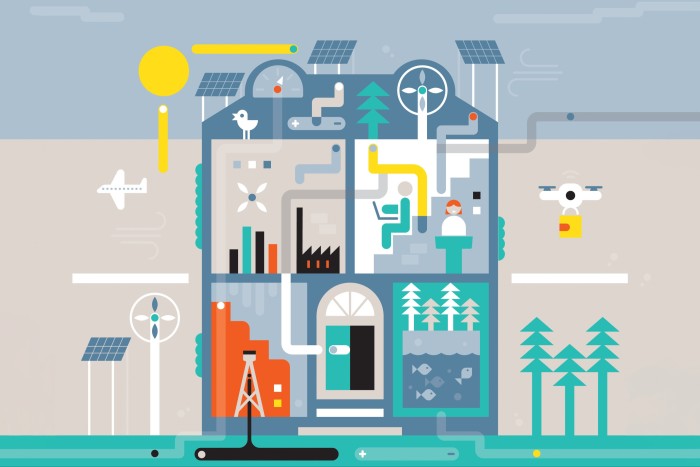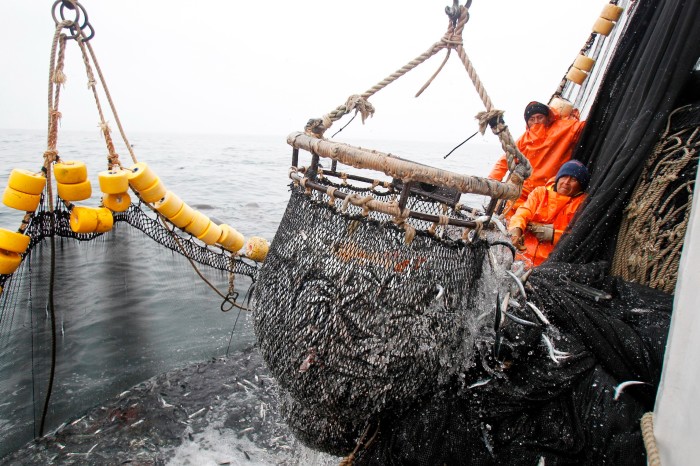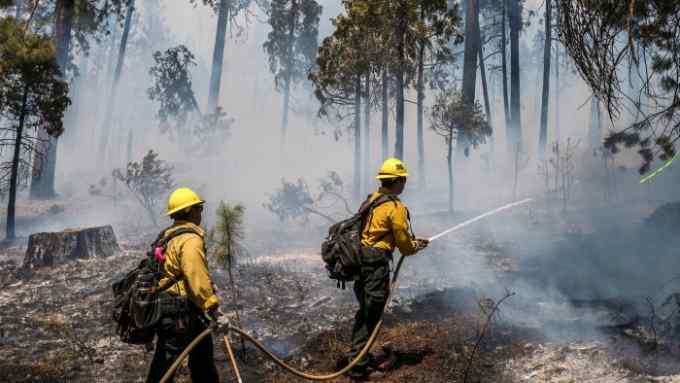Can big fish lead the way on ocean sustainability?

Simply sign up to the Business education myFT Digest -- delivered directly to your inbox.
Many companies have little interest in sustainability or are too small to have much influence on their own. But recent actions by a group of influential seafood businesses, in partnership with academics, provide a potential blueprint for positive change.
In 2015, we analysed, in Transnational Corporations as “Keystone Actors” in Marine Ecosytems, how a few large operators in global seafood production dominate revenues and production. These multinational corporations are drawn from diverse cultures and countries — Japan, Korea, Thailand, Norway, the Netherlands and the US. They are all challenged by depleted fish populations, deteriorating ocean conditions and present and future effects of climate change.
We began discussions with the companies’ chief executives on a partnership between science and business for a healthy ocean, which led to Seafood Business for Ocean Stewardship (SeaBOS). There has since been substantial progress through this coalition of nine of the world’s largest seafood companies, which produce 10 per cent of seafood and employ more than 200,000 people through 600 subsidiaries.
We provide them with syntheses of the most recent research on climate change, ocean plastics, antibiotics and endangered species, and have developed new analyses that help them identify high risk areas for illegal fishing and labour abuse. Using this information, we collaboratively identify priorities and strategies based on science, set ambitious goals and support them with the knowledge and expertise they need to deliver tangible outcomes on their commitments. We also support monitoring of changes within the companies to help with their progress reports.
We are convinced that, through their disproportionate power, these seafood companies can help achieve a healthy and resilient ocean ecosystem that produces abundant raw materials. They can be leaders in stewardship and trigger a positive chain reaction if adequately supported by government action, economic incentives and consumer preferences.
FT Business School Insights: Sustainability

Research by leading professors, features and academic and business opinion. Read the report here.
Reaching the objectives of the 2015 UN Sustainable Development Goals and the Paris Climate Agreement is critical to secure a liveable future on Earth, and requires substantial engagement from the private sector.
Business is often viewed as a barrier to the necessary change, focused on short-term returns, and exerting its powerful influence to stifle innovation, lobby against regulations, discredit scientists and engage in greenwashing. But business interest in climate science has increased substantially over the past decade. Corporate commitments to establishing science-based climate emissions reduction targets have grown, reducing costs and driving investment and innovation in alternative energy systems.

The next focus is integrating the biosphere of living systems. Progress is under way. The EU taxonomy for sustainable activities, the Chinese gross ecosystem product accounting system for nature, the Kunming-Montreal Global Biodiversity Framework and the High Seas Treaty adopted in March show how biological systems are entering the political mainstream. These initiatives are generating incentives for corporations in the food, transport and energy sectors as well as banks, investors, insurance companies and credit rating agencies.
In 2020, the SeaBOS companies agreed to set goals with deadlines for their engagement with the biosphere. They defined targets, all of which are publicly available in their progress report, for reducing illegal fishing and eliminating modern slavery in their own operations and in their global supply chains, reducing risks to endangered species, minimising their use of antibiotics, reducing production and use of plastics and bending their greenhouse gas emission curves in line with scientific targets.
Their progress report in 2022 shows the advances since that time. The three Japanese companies are working together to reduce the use of antibiotics and develop vaccines in their fish farms. And all SeaBOS members have advocated for a ban of harmful subsidies incentivising overcapacity and leading to overfishing — although they have themselves been recipients of such funding.
But, in spite of these results, much hard work remains ahead — not least to help rebuild depleted fish stocks. Yet, as scientists, we continue to be surprised by the level of ambition and the commitment within companies to change. Our collaborative work illustrates how they can engage. We provide guidance on how to act and what to prioritise, including through the co-development of voluntary procurement guidelines, tool kits to support action, best practice guidelines, strategies for reducing harm to endangered species, and a road map for reducing the use of antibiotics.
The risk the companies have taken is starting to pay off. They are learning faster than their peers and starting to attract new sustainability-linked loans and investments. We are learning more as scientists, and can produce better, more relevant science. We have identified a number of similar keystone actors in other ocean sectors and have initiated exciting conversations with several companies, including in ocean energy, transport and tourism.
Science and business, together, can mobilise momentum for transformative change. But we cannot do so alone. The scientific community can support corporate alignment within the challenges and limitations of the biosphere. Now, we need more independent funders to help finance this transition and more government action to provide incentives and regulation to match.
Henrik Österblom, professor, Stockholm Resilience Centre at Stockholm University, is co-author with Prof Jan Bebbington, Robert Blasiak, Madlen Sobkowiak and Prof Carl Folke, of Transnational Corporations, Biosphere Stewardship and Sustainable Futures (Annual Review of Environment and Resources, 2022)

Comments